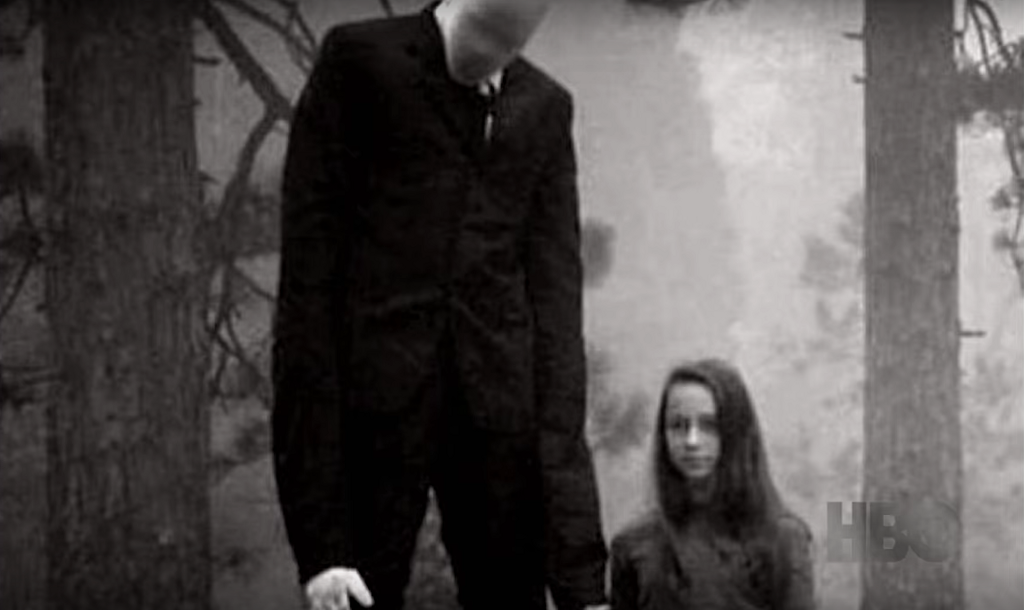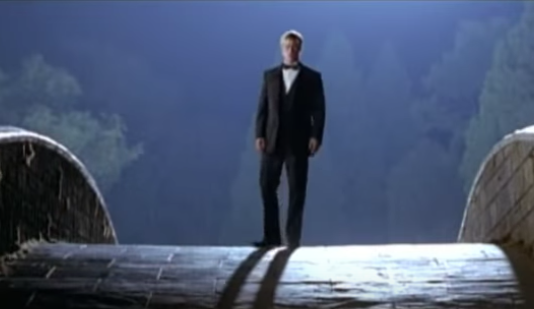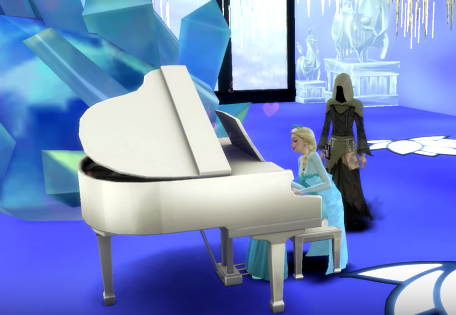A Grim Primer On Slenderman
A new documentary on the creepypasta phenomenon is available on HBOGO

In May of 2014, in Waukesha, Wisconsin, a suburb of Milwaukee, 12-year-olds Morgan Geyser and Anissa Weier woke up after a slumber party, led their friend to a wooded area nearby, and stabbed her 19 times with a kitchen knife, leaving her for dead. When questioned by police, the girls said they’d done it to appease a fictional creepypasta character named Slenderman—a figure who’s at once horror movie-creepy and Iron Giant-level misunderstood, depending on which wormhole of fan art you fall down on Tumblr, deviantart, or YouTube. There are a lot of different descriptions of Slenderman out there, but the main gist of the mythology is that he is a tall (you guessed it), slender man who’s able to follow you wherever you go as soon as you learn he exists. He can teleport, he has no face, and he kind of looks like Meet Joe Black Brad Pitt-meets-the Grim Reaper from The Sims. He’s in a suit, but also he’s quite death-y. The girls claimed the stabbing was a sacrifice that proved their loyalty so they could join Slenderman in his mansion in nearby Nicolet National forest. Their friend, luckily, survived the attack.



HBO released a documentary about the girls Monday called “Beware the Slenderman,” and in it filmmaker Irene Taylor Brodsky tries to make sense of the case’s bizarre details. The victim and her family (understandably) didn’t agree to take part in the doc, so it largely tracks Geyser and Weier’s fight to be tried as children instead of adults, and features interviews with their family members throughout the process. On my end, I went into this with the same level of understanding that I’d had for the Amanda Knox documentary—I’d seen headlines about the case, but never really clicked through to learn what had happened. “Seems awful,” was my general understanding, and as it turns out, it really was.
About half of the doc is spent setting up the basic facts of the case: Who is Slenderman? Who were these girls? What are their parents like? (A meme, nerdy tweens who had found one another, normal and sensitive-seeming Wisconsinites.) Once that’s out of the way, Brodsky dives into the girls’ psychology and what kind of role that could have played in the crime. Both perpetrators confessed to the stabbing, and they have been diagnosed with schizophrenia and a delusional disorder, respectively, since their arrests. If found guilty, they could face up to 65 years in prison. But—Brodsky seems to want us to ask ourselves—is the justice system really addressing the root problem in this case? Or is giving mentally ill kids unlimited internet access part of what went wrong here?
At the end of the ride, I definitely felt for the families in a way I’m not sure I would if more of the victim’s story had been examined. But at the same time, the movie helps us understand the nuances of a case that might otherwise be easy to write off with, “Lol they’re nuts.”
If you end up having the time, I say watch it, but I’m definitely more interested in what documentaries might come out after the rulings have been reached. Geyser and Weier will have separate trials, and both are set to start later this year.
